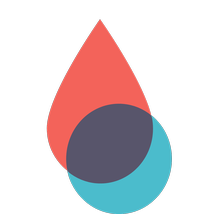Respiratory disorders samples and experimental services
What are respiratory diseases?
Respiratory diseases refer to a group of illnesses that affect the respiratory system, including the lungs, bronchi, trachea, and alveoli. These diseases can range from mild, such as the common cold, to severe, such as pneumonia and tuberculosis.
Examples of respiratory diseases include asthma, bronchitis, COPD, cystic fibrosis, lung cancer, and COVID-19 (caused by the SARS-CoV-2 virus).
What types of samples are used in respiratory disorder research?
The type of sample used depends on the specific research question being studied and the stage of the disease being evaluated. In respiratory disorder research, various types of respiratory biological samples can be used, including:
Mucus samples
Mucus and other material coughed up from the lungs, can be analyzed for the presence of bacteria, viruses, or other pathogens.
Bronchoalveolar Lavage (BAL) fluid
This is a sample of fluid taken from the lungs through a bronchoscope and can be used to assess lung function and the presence of inflammation or infection.
Blood samples
Blood can be analyzed for biomarkers associated with respiratory disorders, such as inflammation, oxidative stress, or immune responses.
Nasal swab samples
Samples taken from the nose or throat can be used to detect respiratory viruses or other pathogens.
Tissue samples
In some cases, small tissue samples from the lung can be collected through a biopsy procedure and analyzed for evidence of disease or infection.

Available types of respiratory diseases biological samples
- Tissues
- Fresh tissues
- Frozen tissues (OCT and FF)
- FFPE tissues
- Healthy tissues
- Blood derivatives
- Whole blood
- PBMC
- Plasma
- Serum
- Leukapheresis
- Biofluids
- Nasal swabs
- Respiratory tract swabs
- Urine
- Stool/Feces
- Saliva
Types of Collections
- Retrospective: we can look into existing biobank collections
- Prospective: we can set up clinical collection specific to a given project
What Labtoo can provide:
- Feasibility of availability of samples or experimental services
- Regulatory aspects (transfer authorizations, export authorizations, ethics committee agreement)
- Contracting
- Samples shipment in appropriate conditions
- Clinical data or results
- Other services (i.e. Nucleic acid extraction, quality control)

Get started with your respiratory diseases research request
Please answer the fields below to be contacted by our team of scientists
Experimental models used in respiratory disorder R&D
There are several experimental models used in respiratory disorder research and development, including:
Cell culture models: utilizing human or animal cells in vitro to study cellular processes and interactions.
Animal models: using animals such as mice, rats, and rabbits to study the physiological and pathological effects of respiratory disorders.
Organoids models: three-dimensional structures grown from stem cells or other cell types to resemble organs and allow for the study of cellular interactions.
Ex vivo models: utilizing human tissues obtained from biopsy or surgical specimens to study the molecular and cellular mechanisms of respiratory disorders.
Patient-derived xenografts (PDXs): using human tumor tissue implanted into immunocompromised mice to study the effects of the disease in a living organism.
Microfluidic models: utilizing microfluidic chips to recreate the complex fluid dynamics of the respiratory system in a controlled environment.
In silico models: using computer simulations to study the physiological and pathological processes of respiratory disorders.
These models are used to study various aspects of respiratory disorders, including pathogenesis, drug efficacy, and disease progression.

Our team will handle your respiratory disorders R&D procurement from the beginning to the end
Perform a feasibility study by looking for existing samples already in collections & ready to be transferred
Set up a clinical biological collection and preparing contracts with sources
Assist the material transfer from the source to the lab, including treatments, QA or shipping, as needed
Some examples of respiratory disorders and prevalence
These figures demonstrate the high prevalence of respiratory diseases and the significant impact they can have on people's health and well-being.